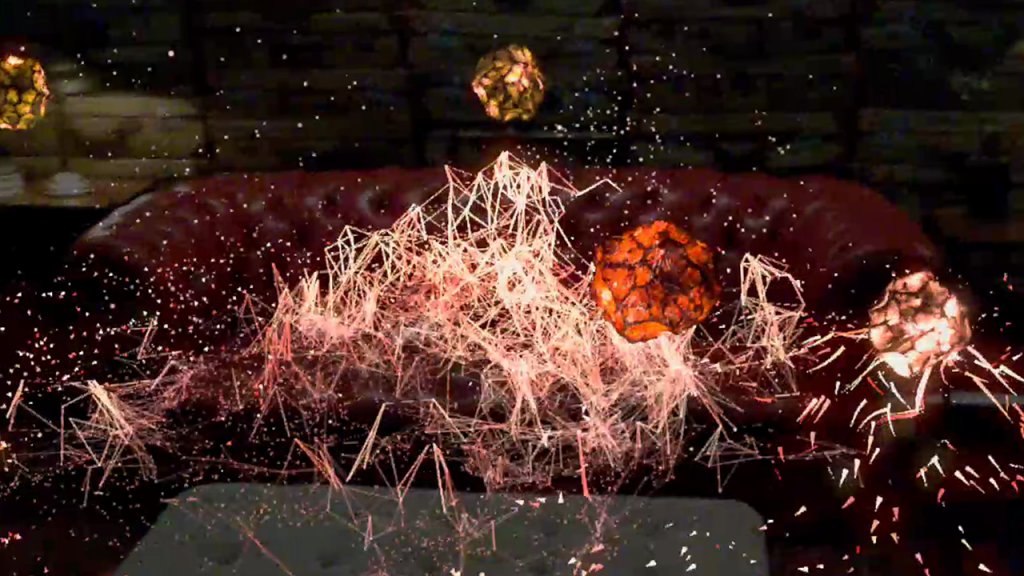
Mike Tucker is a creative lead at Magic Leap, a company that makes an AR headset designed to be comfortable and maneuverable to use. Since the 1990s up to 2018 when he gave a talk at the Eyeo Festival, he transitioned across different mediums to produce work, starting 2D based mediums such as Hypercard and Adobe Flash, moving onto dynamic mediums such as interactive spatial exhibits and finally into VR development.
Mike discussed some main principles he learned from helping create Tonandi at Magic Leap – an interactive project featuring the music of the band Sigur Ros. He mentioned how head tracking, 6 Degrees of Freedom, Spatial Sound, Touch/Hand controls, Eye tracking, and Environmental Design were key, showing how each principle influenced the final version. Tonandi combined audio and visual elements to create an AR space with translucent, abstract, nature-inspired shapes that moved along to the music and changed the user’s perception of sound and their surroundings.
Having a slight interest in VR, I went into his talk mostly expecting him to talk about his work and the company in a very surface level overview without much of the guiding process. However, I came out of it amazed at how sound could be integrated into a spatial experience and immerse a user further than just visuals could, as well as how he demonstrated that spatial computing was ripe with versatility to overtake the future, including applications for impaired users and the possibility to develop experiences entirely through AR and VR.
![[OLD FALL 2020] 15-104 • Introduction to Computing for Creative Practice](wp-content/uploads/2021/09/stop-banner.png)